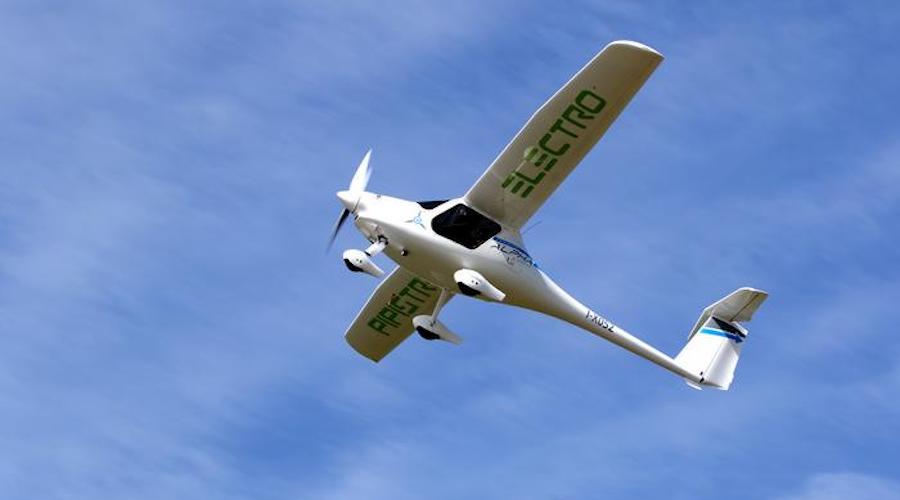
Battery-powered electric aircraft have the potential to significantly reduce the environmental impacts of aviation in the long term, new research has found.
A paper published in The International Journal of Life Cycle Assessment notes that in the short-term, battery-powered electric aircraft will probably mostly be beneficial and used for shorter distances, such as what in Norway is called “fjord-hopping,” meaning shorter flights between deep fjords.
The study, led by researchers at Chalmers University of Technology, examined a commercially available battery-electric aircraft with two seats, the Pipistrel Alpha Electro, through a life cycle assessment. The same aircraft is also available as a fossil fuel-powered model, enabling them to directly compare.
The team investigated the entire impact of each aircraft from the raw material extraction to the end of their lives with a functional unit of 1 hour of flight time. Data and records from the aircraft manufacturer informed much of the study.
The scientists considered a wide range of impact categories with a focus on global warming from greenhouse gas emissions, mineral resource scarcity from the use of rare minerals, particulate matter formation from particle emissions, acidification from acidic emissions like nitrogen oxides and ground-level ozone formation from emissions of nitrogen oxides and hydrocarbons.
“The key take-home from this study is that small electric aircraft can have a notably lower climate impact – up to 60% less – and other types of environmental impacts than equivalent fossil-fuelled aircraft. However, there is a trade-off regarding mineral resource scarcity – about 50% more, even in the most favourable scenario, mainly due to rare metals in the batteries of the electric aircraft”, Rickard Arvidsson, co-author of the paper, said in a media statement.
As with electric cars, the electric aircraft is comparatively worse from a climate point of view when the plane is brand new since the production of the battery consumes a lot of energy and resources. Then, over time, the relative impact decreases as the electric plane is in use and its benefits are realized – namely, emission-free electric propulsion. The longer the electric plane is used, the better it becomes for the environment, and eventually, a ‘break-even’ point is reached.
After approximately 1,000 flight hours, the electric aircraft overtakes the fossil fuel aircraft in terms of less climate impact, after which the electric aircraft is better for the environment. This is measured in kg CO2 eq/h – carbon dioxide equivalents per flight hour – and is true under optimal conditions, where green energy is used. All use after that thus becomes a “climate benefit,” compared to the conventional aircraft. The estimated lifespan of the aircraft is at least 4,000 hours, or four times as long as the break-even time.
“The lifetime of the lithium-ion batteries, however, would have to be about twice as long for the mineral resource scarcity to be about the same for the electric airplane and the fossil-fuel aircraft,” Anders Nordelöf, senior author of the article, said. “Alternatively, have double the energy storage capacity such that only one of two packs is needed onboard for the same flight time.”
In the study, the researchers discuss the further development of batteries as a major step towards reduced lifecycle impacts of electric aircraft. Already today – but after the study was carried out – the manufacturer of the aircraft model has managed to extend the life of the batteries as much as three times. New battery technologies could further improve both climate impacts and mineral resource scarcity.
“There is a constant development of lithium-ion batteries that can improve the environmental performance of the electric aircraft and make it relatively even more preferable than the fossil-fuelled one,” Arvidsson said. “There are also new battery technologies that could be developed and be applicable to electric aircraft in a longer time perspective, such as lithium-sulphur batteries, although these are still in an early phase of technology development.”